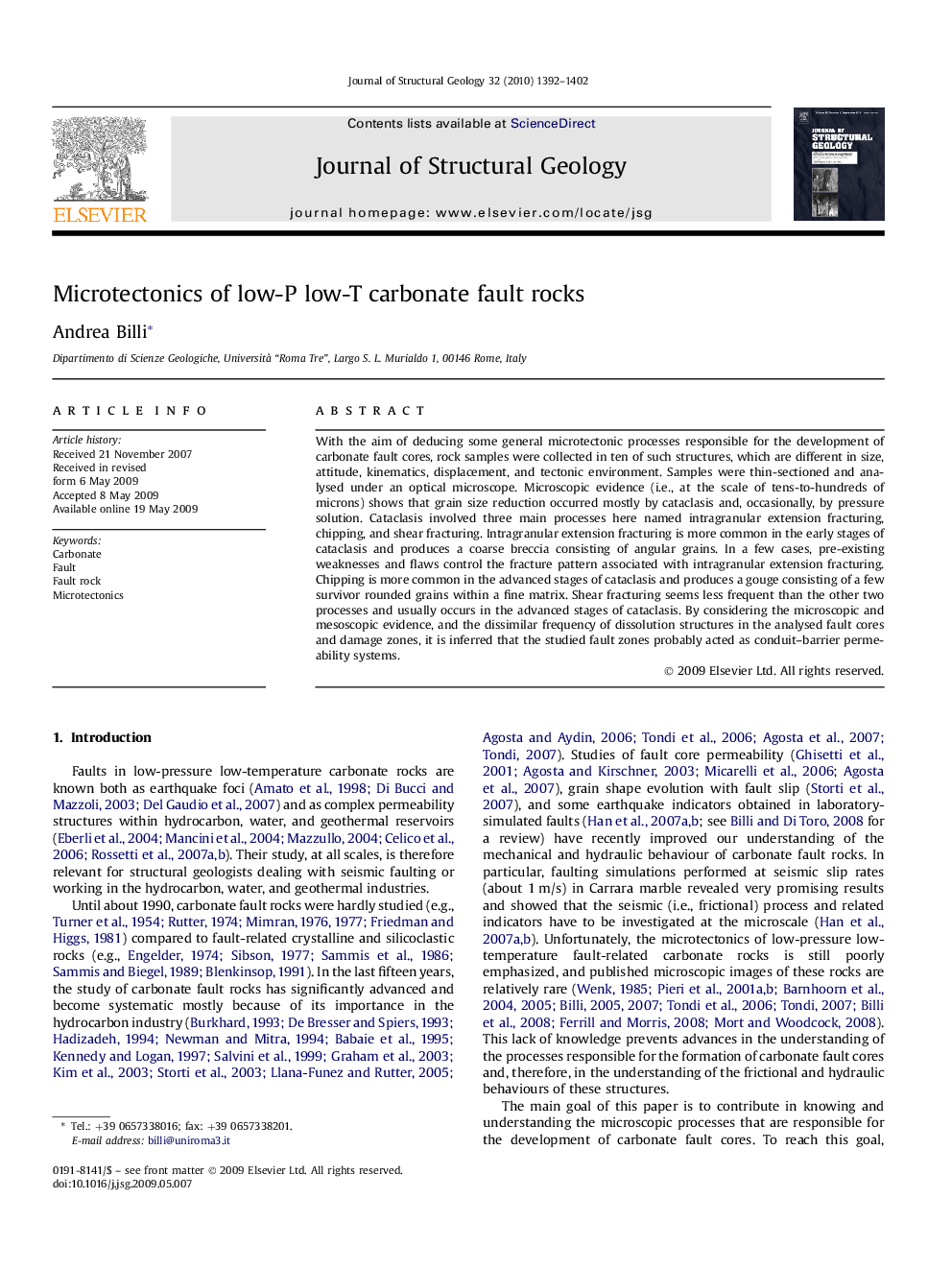| Article ID | Journal | Published Year | Pages | File Type |
|---|---|---|---|---|
| 4733869 | Journal of Structural Geology | 2010 | 11 Pages |
With the aim of deducing some general microtectonic processes responsible for the development of carbonate fault cores, rock samples were collected in ten of such structures, which are different in size, attitude, kinematics, displacement, and tectonic environment. Samples were thin-sectioned and analysed under an optical microscope. Microscopic evidence (i.e., at the scale of tens-to-hundreds of microns) shows that grain size reduction occurred mostly by cataclasis and, occasionally, by pressure solution. Cataclasis involved three main processes here named intragranular extension fracturing, chipping, and shear fracturing. Intragranular extension fracturing is more common in the early stages of cataclasis and produces a coarse breccia consisting of angular grains. In a few cases, pre-existing weaknesses and flaws control the fracture pattern associated with intragranular extension fracturing. Chipping is more common in the advanced stages of cataclasis and produces a gouge consisting of a few survivor rounded grains within a fine matrix. Shear fracturing seems less frequent than the other two processes and usually occurs in the advanced stages of cataclasis. By considering the microscopic and mesoscopic evidence, and the dissimilar frequency of dissolution structures in the analysed fault cores and damage zones, it is inferred that the studied fault zones probably acted as conduit–barrier permeability systems.
